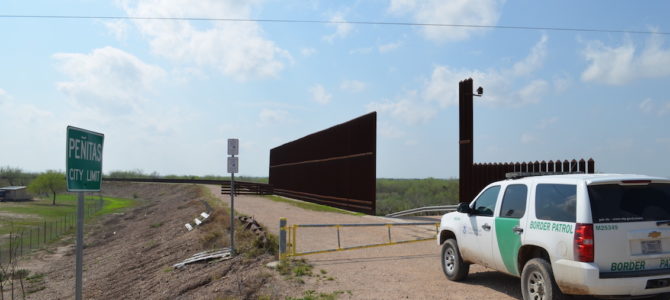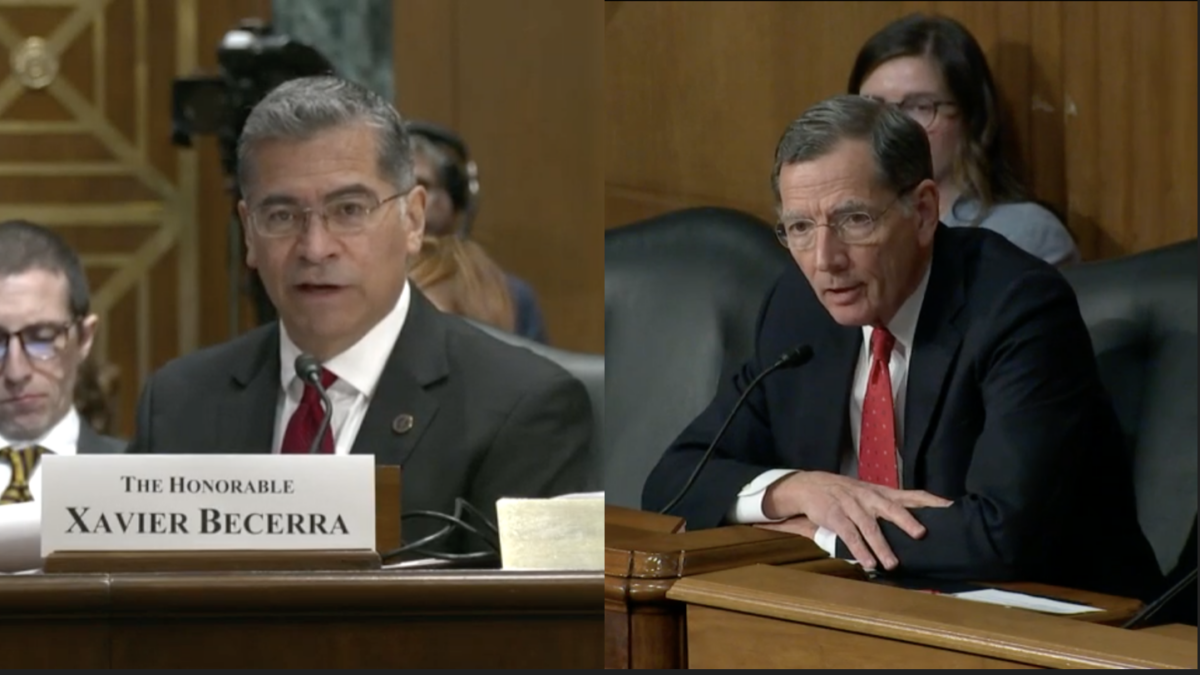
On Tuesday, The Washington Post reported that President Trump is privately pushing for the U.S. military to build his long-promised border wall. The $1.3 trillion spending bill Trump signed last week allocated a mere $1.6 billion for the wall, far less than the $25 billion Trump wanted, and the money comes with tight restrictions on how it can be spent.
Despite the president’s grandiose promises of a border wall during the 2016 campaign, when he boasted that he would build a wall and make Mexico pay for it, his efforts to secure congressional funding for the project have hit a wall, so to speak. Democrats balked at his offer to trade long-term wall funding for easier citizenship access for younger illegal immigrants, and Republicans don’t see it as a priority. Earlier this month, likely in an effort to keep the issue alive, Trump traveled to California to view prototypes of the wall. But nothing will come of them if he doesn’t secure funding.
So now, Trump’s idea is to get the Pentagon, which was funded to the tune of $700 billion in the spending package, to build the wall instead. Over the weekend, the president took to Twitter to argue that his border wall is a national security issue, writing, “Build WALL through M!” (Two Trump advisors reportedly told the Post that “M” stood for “military.”)
https://twitter.com/realDonaldTrump/status/977855968364171264
There are plenty of reasons this almost certainly won’t happen, mostly because repurposing Pentagon funds for a wall would require an act of Congress, and lawmakers obviously aren’t interested right now. But Trump’s desire to pull the military into his border wall plan shows just how abnormal the scheme is. It also reveals how limited the effects of an actual border wall would be.
The Reality Of The Border Isn’t What You Think
Earlier this month, I spent some time in the Rio Grande Valley, the busiest sector on the 2,000-mile U.S.-Mexico border for illegal crossings. I went there to report on how the border actually functions, from Border Patrol operations to the federal court in McAllen, Texas, to the humanitarian organizations working with migrant families.
There are only 55 miles of border fencing in the Rio Grande Valley sector—I say “fencing” but it’s much more like a wall: 18-foot-high steel bollard beams set atop a levee with a sheer concrete wall on the south face of the embankment. It’s an imposing sight, and Border Patrol agents say it helps funnel illegal traffic to certain choke points, which gives them more time to get there and apprehend migrant or drug smugglers (who are often one and the same; the price of crossing the river is sometimes carrying a backpack of drugs across it).
But the fencing itself doesn’t stop people and drugs from coming across. Border Patrol in the Rio Grande Valley apprehends between 300 and 500 people every single day, and they have no idea how many slip past them. The operation there is extensive: some 3,000 Border Patrol agents cover 316 river miles with trucks, SUVs, ATVS, dirt bikes, river boats, horses, K-9 units, helicopters, drones, and radar-equipped weather balloons on loan from the Department of Defense. The areas along the river are under constant surveillance from motion-sensors and cameras hidden in the brush and mobile watchtowers.
In other words, fencing is one of many tools law enforcement use along the border. Walling off the entire southern border simply isn’t something serious people who work on the border even talk about. Manuel Padilla, the Border Patrol’s sector chief in the Rio Grande Valley, has called for more fencing in certain areas, but that’s a far cry from claiming that we need fencing everywhere.
Even Trump has admitted that an actual wall along all 2,000 miles of our southern border is impossible because of natural barriers like rugged mountains and vast stretches of desert. And a 2017 report by the Government Accountability Office (GAO) found the Department of Homeland Security has no way of measuring how well fencing works or where it works best.
Put another way, believing that a wall from San Diego to Brownsville would solve our immigration and drug problems is like believing that Transportation Security Agency agents in the nation’s airports are going to thwart al-Qaeda. It’s not that the TSA has no role to play, but it’s just one of the tools in the counterterrorism toolkit, whose function is largely as a deterrent—a lot like a border fence, come to think of it.
The Only Way To Secure The Border Is To Militarize It
When immigration hawks talk about a border wall, what they’re really arguing for—often without realizing it—is a militarized border. That is, deploying the U.S. military on American soil, all along the southern border region. It sounds outrageous, but that’s what it would take to “secure” the border. (North Korea, for example, has a secure border with South Korea.)
Before heading down to the Rio Grande Valley, I spoke with Fred Burton, a counterterrorism expert and chief intelligence officer for Stratfor, a geopolitical intelligence firm in Austin. Burton told me the problems we have with illegal immigration and drugs aren’t enough to militarize the border.
“What it would take in order to see draconian measures to secure the border is a nine-eleven kind of moment—a weapon of mass destruction, an assassination of a key government official,” he says. “You would have to have some catastrophic event that’s directly tied to the border. Drugs is not going to do it. I’m convinced of that.”
Even then, deploying the U.S. military along the southern border isn’t something we can sustain indefinitely, any more than we could indefinitely ground all planes after 9/11. And in light of Americans’ views of endless military engagements, political support for a militarized border would likely evaporate before long. At some point, we’d have to face the fact that a commercial republic like ours cannot simply militarize its borders. That’s not a realistic policy, and never will be, and the White House should stop pretending that it is.









